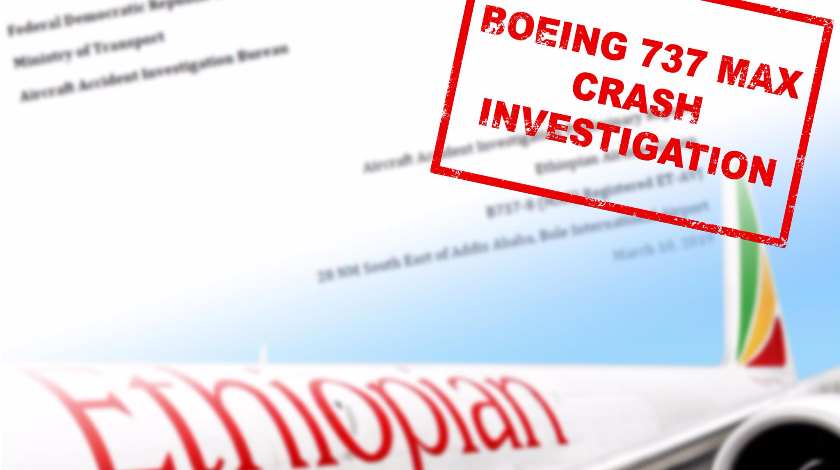Photo: vaalaa / shutterstock.com
Reading Time: 2 minutesThe National Transportation Safety Board issued seven safety recommendations to the Federal Aviation Administration, calling upon the agency to address concerns about how multiple alerts and indications are considered when making assumptions as part of design safety assessments.
Aviation Safety Recommendation Report 19-01 was issued Thursday stemming from the NTSB’s ongoing support under International Civil Aviation Organization Annex 13 to Indonesia’s Komite Nasional Keselamatan Transportasi (KNKT) investigation of the Oct. 29, 2018, crash of Lion Air flight 610 in the Java Sea and the Aircraft Accident Investigation Bureau of Ethiopia’s investigation of the crash of Ethiopian Airlines flight 302 near Ejere, Ethiopia.
All passengers and crew on board both aircraft – 346 people in all – died in the accidents. Both crashes involved a Boeing 737 MAX airplane.
The seven safety recommendations issued to the FAA are derived from the NTSB’s examination of the safety assessments conducted as part of the original design of Boeing’s Maneuvering Characteristics Augmentation System (MCAS) on the 737 MAX and are issued out of the NTSB’s concern that the process needs improvement given its ongoing use in certifying current and future aircraft and system designs.
“We saw in these two accidents that the crews did not react in the ways Boeing and the FAA assumed they would,” said NTSB Chairman Robert Sumwalt.
“Those assumptions were used in the design of the airplane and we have found a gap between the assumptions used to certify the MAX and the real-world experiences of these crews, where pilots were faced with multiple alarms and alerts at the same time.
It is important to note that our safety recommendation report addresses that issue and does not analyze the actions of the pilots involved in the Lion Air and Ethiopian Airlines accidents. That analysis is part of the ongoing accident investigations by the respective authorities.”
The NTSB notes in the report that it is concerned that the accident pilots’ responses to unintended MCAS operation were not consistent with the underlying assumptions about pilot recognition and response that were used for flight control system functional hazard assessments as part of the Boeing 737 MAX design.
The NTSB’s report further notes that FAA guidance allows such assumptions to be made in certification analyses without providing clear direction about the consideration of multiple, flight-deck alerts and indications in evaluating pilot recognition and response.
The NTSB’s report states that more robust tools and methods need to be used for validating assumptions about pilot response to airplane failures in safety assessments developed as part of the U.S. design certification process.
The seven recommendations issued to the FAA urge action in three areas to improve flight safety:
- Ensure system safety assessments for the 737 MAX (and other transport-category airplanes) that used certain assumptions about pilot response to uncommanded flight control inputs, consider the effect of alerts and indications on pilot response and address any gaps in design, procedures, and/or training.
- Develop and incorporate the use of robust tools and methods for validating assumptions about pilot response to airplane failures as part of design certification.
- Incorporate system diagnostic tools to improve the prioritization of and more clearly present failure indications to pilots to improve the timeliness and effectiveness of their response.
NTSB investigators continue to assist the KNKT and AAIB in their ongoing investigations. The NTSB has full access to information from the flight recorders, consistent with standards and recommended practices for the NTSB’s participation in foreign investigations.
The KNKT’s accident report is expected to be released in the coming months, and their analysis of the Lion Air accident may generate additional findings and recommendations.

